Film Name: 乔乔的异想世界 / Jojo Rabbit
“Try not to watch films online if you can go to the cinema.” Although the films competing for this year’s Oscars have been available for a long time, I’ve been looking forward to seeing some of them when I learnt that they would be introduced to the cinema, including 1917, Ford v Ferrari, Jojo Rabbit, and so on.
Even if it’s six months later than originally expected, it’s worth the wait to see it on the big screen.
I know it’s a bit late to be talking about a film from last year, and the metaphors and details of the film have been analysed and reviewed by many people …… But it’s never too late to review a good work.
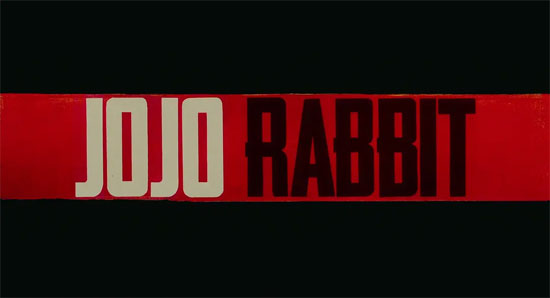
Jojo Rabbit is one of those films where you can probably guess what the story is going to be about just by reading the synopsis, and so it is, so the point of the film isn’t so much about the ups and downs as it is about how vividly it conveys its thoughts, wills and feelings.
I have to say that the use of children’s point of view in the film is a very clever and safe way to show both sides of the “beautiful and absurd” in the worlds of fantasy and reality – I was more interested in the supporting character, Captain K., than in the film’s linguistic environment. In the linguistic context of this film, I’m afraid that his “fantasy world” is no less beautiful than JoJo’s, but on the contrary, it has a touch more tenderness and blood.
[This is a spoiler alert that doesn’t make much sense, but I’ll say it anyway].
Jojo Rabbit is too beautiful to be a World War II film.
Because it’s based on the subjective viewpoint of 10-year-old Jojo Batesole, who sees the world as sunny and colourful, with a few Nazi references thrown in for good measure.
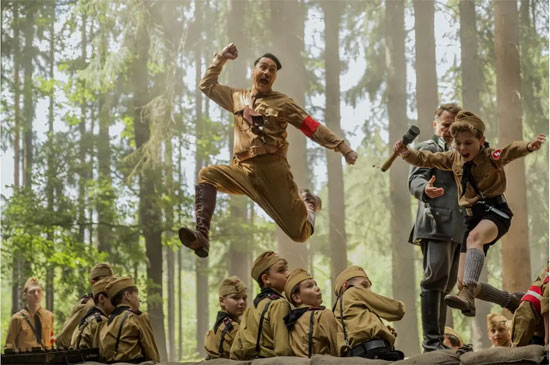
While the dying Third Reich was grey in the eyes of others, JoJo’s eyes were filled with the warm tones of spring, the yellow uniforms of the Boys’ Brigade, the red emblem of the Banner, the green of the woods, the meadows, and his mother’s cardigan …… To the young and uneducated man the war meant courage and glory, and the future of his own great country was brightening. Bright.
Director Taiga Viditi’s portrayal of a fantasy version of Hitler adds to the film’s charm, funny, shrewd, cunning, sometimes pretentious, sometimes timid and hysterical, a perfect blend of friend, idol and father, adding to Jojo Rabbit’s naïve and absurd comedic qualities.
Because of the subjective and objective tone of the film, the audience can’t be too realistic when enjoying the film, and apart from the rabbits that appear in different scenes, the most iconic thing is the fluttering butterflies.
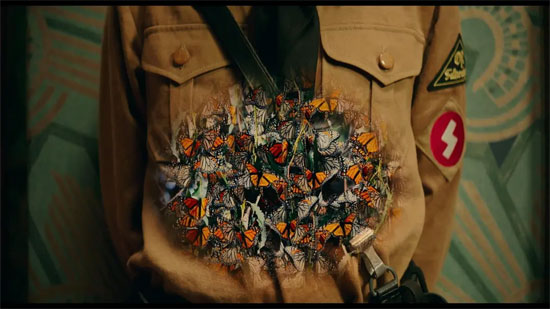
For JoJo, a young Nazi loyal to his leader, dancing and butterflies don’t have to exist; they’re even decadent sounds that can disturb his will.
After all, the young man is not yet a stereotype, especially after the appearance of the Jewish girl Elsa, JoJo can not restrain the butterflies in his belly began to move – whether it is one-sided fanatical belief in Hitler, or Elsa’s unconscious proximity to JoJo was attracted by the “good” in his head. “The difference is that the former is the result of propaganda and self-envisioning, while the latter is the result of active enquiry under the curiosity of the unknown.
When the butterflies in JoJo’s mind finally win out over the uniform on his body, he sees his mother Rosie’s dancing shoes while chasing butterflies in the square.
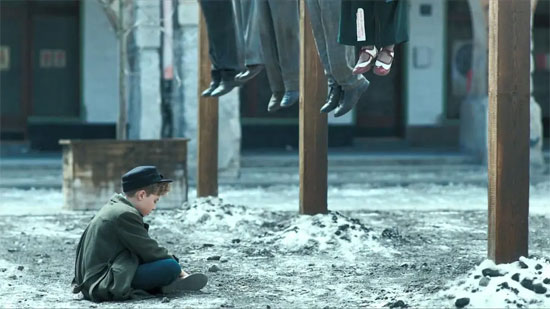
This is one of the best twists in the film, as both the abstraction of the butterfly and the act of tying a shoelace symbolise JoJo’s immature teenage nature, and the latter sees JoJo stumbling all the way through, from not being able to take care of himself (and asking his mother to help him out) to hobbling around to eat his lessons (and being teased by his mother), and finally to suddenly being able to tie a shoelace (and doing it for his mother)… …
If the butterfly’s fluttering is a gradual sprout, then learning to tie shoes is an overnight process of “pulling up the seedling to grow”.
Of course, Jojo Rabbit never loses sight of the ten-year-old boy’s gaze, whether it’s the exaggerated dramatisation of the battlefield or Jojo and Elsa’s dance in the street, the film’s most striking ethos and tone is carried through.
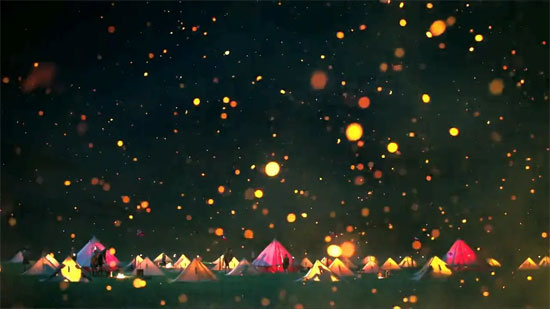
Apart from the colours, the film retains a high degree of consistent mood-shaping in its compositions and camera work, i.e., JoJo’s infinitely fascinating and half-true whimsical world, where no matter what adversity, or what horrors, are ultimately embellished/alienated by JoJo into acceptable explanations.
I can’t help but wonder what Captain Klenchendorff’s world would be like under the same sky.
Every character in Jojo Rabbit shines, and my favourite character is Captain K. While it’s not uncommon to see supporting characters in similar settings, he possesses an energy in this film that rivals that of the protagonist, Jojo.
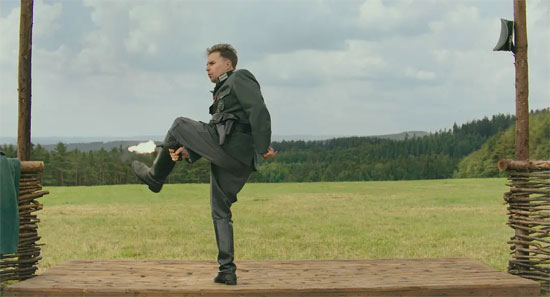
Captain K. exudes an air of alienation from his surroundings when he first appears on the scene: with his collar open and his gun belt slung across his shoulder, he is an unkempt anomaly in the German army, and his outspoken slur “our army will lose” is not like a good instructor leading the youth of the Third Reich in a spirited manner.
Even when he demonstrated his marksmanship, his huge, dangling poses were full of pompous banter.
Captain K, who has been benched in the rear due to battlefield losses, may have felt resentment and shame, but (in the early part of the film) he is shown as more disillusioned and numb.
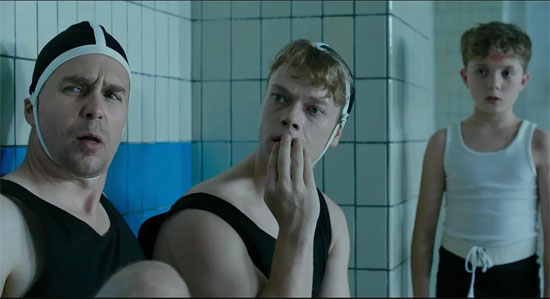
Teaching a bunch of kids how to be cannon fodder and do logistics that are better than nothing before the building is about to fall is dishonourable and pointless for a soldier.
Therefore, Captain K was more like a clown who didn’t wake up all day at first, being stirred up by the people around him, letting Rosie slap him in the face, occasionally teasing the naive JoJo, just like an old soldier who can’t hold on to the wall.
But as time goes on, another aspect of Captain K’s peculiarities emerges, and he actually understands and accepts JoJo’s “artistry” of the Jews, and in a way that, consciously or unconsciously, cuts out the childish racial prejudice, and simply recognises the teenager’s imagination and desire to explore – he can draw too. -He also paints.
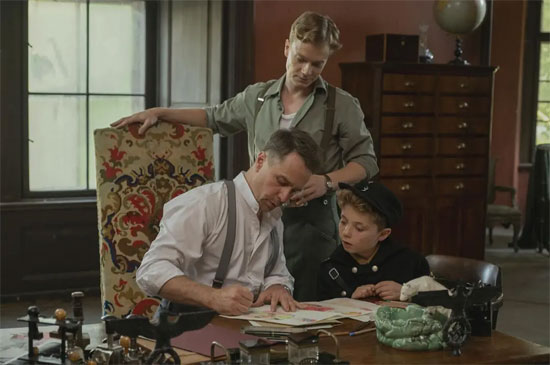
In everyone’s original impression, Captain K such an uninspired person, to put it nicely, called out of interest, to put it bluntly, is to wait for death, the world in his heart must be a dead lead grey …… but in the pull out of the coloured pencils and their own design of the battle robe, Captain K’s world also has the same colour as JoJo.
The reason why JoJo’s world is colourful is because of his youthful innocence and shallow knowledge, while Captain K’s world has not lost its colour, but because he can be happy in the midst of bitterness, has the courage to face the brutal truth, as well as not forgetting to do what can be done for the good of the people …… So, it is only natural that after that, Captain K will go through great lengths to save JoJo and Elsa.
In the final duel, Captain K pushes his romanticism to the extreme: wearing a rakish red cloak, topped with a pompous red tassel, and with his ambiguous adjutant Finkel, he rushes with his gun raised to an enemy that is absolutely impossible to defeat.
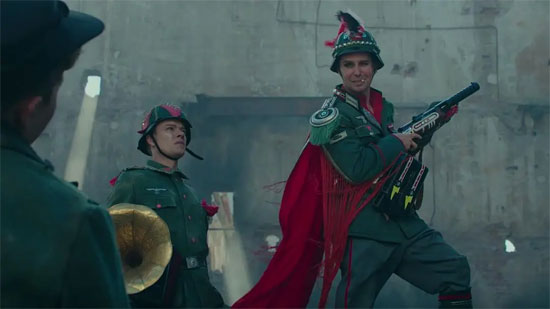
Yes, despite having long recognised the folly of war and the pointlessness of resistance, Captain K still did not surrender or desert, he retained the last vestiges of military dignity, which is why I thoroughly enjoyed the role: recognising his own destiny as well as the destinies of countless Germans, he did not concede or run away, he confronted the annihilation with candour, and he met the reality of the inevitable with foolish whimsy.
I can’t tell whether it’s Sam Rockwell’s performance that’s more outstanding or Captain K’s persona that’s so classic, it should be both …… Originally, the character should have been killed off after Captain K’s dashing dash, but as if to give him a good dose of justice, a scene was arranged afterwards in which he saves JoJo.
By this point, the image of a gutsy, romantic and uninhibited man was completely finished (sadly, there was also a little less afterglow).
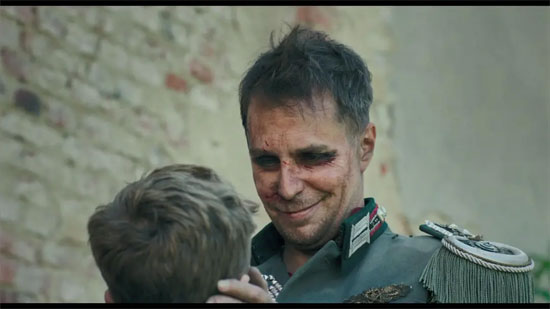
During the brutal war years, if JoJo’s “Whimsical World” is the A-side of growing up, then Captain K’s “Whimsical World” is the B-side of maturing, and they shine in different ways, but they are equally beautiful and touching.
Of course, I like Captain K so much, probably because there are so few similar characters in recent years, and in this era of fewer and fewer WWII films, and fewer and fewer non-Jewish/non-American WWII films, any flesh-and-blood character is worth cherishing.
PS: It’s a good thing I went to the cinema to see Jojo Rabbit, as the film’s pacing is a little crotch-pulling in places, so if I were to watch it at home by myself, I’d probably be distracted by something else halfway through. …… If you haven’t yet seen this film, or would like to see it again, go to the cinema and give it your support.
Please specify:Anime Phone Cases » Jojo Rabbit 2019 Film Review: What would the world look like in Captain K’s mind?